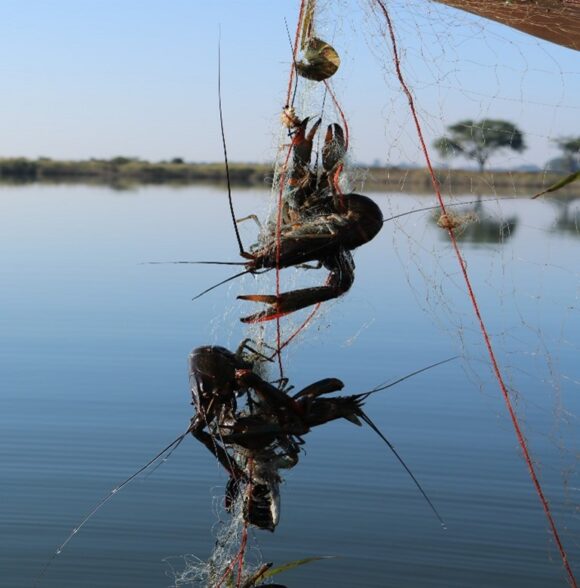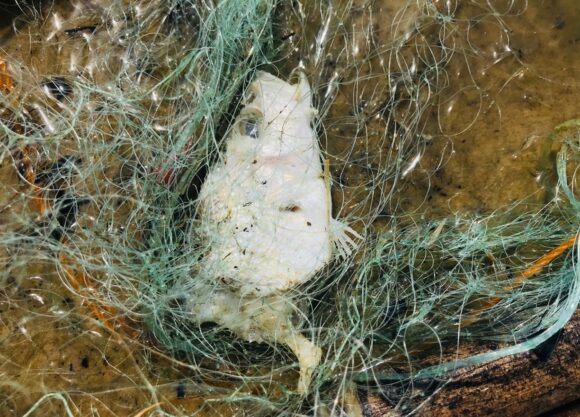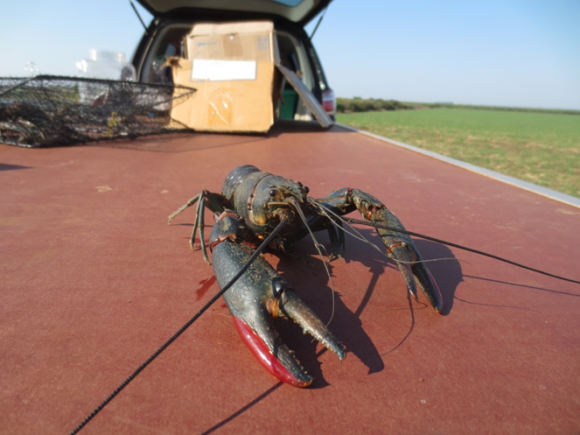Invasive crayfish have the potential to cause high economic cost to artisanal fisheries in southern Africa through scavenging behaviour and destroying fish fry habitat.
A recent study by C∙I∙B Research Associate Josie South (University of Leeds, UK) with scientists from the South African Institute for Aquatic Biodiversity (SAIAB) quantified the damage caused by two invasive crayfish compared to native crab species, at two temperatures, on tilapia catch and macrophytes.
Economic costs of invasive species are vital to prioritise and incentivise management spending to reduce and restrict invasive species. No economic costs have been published for the global invader – the redclaw crayfish (Cherax quadricarinatus), and none for the entire continent of Africa. Another prolifically invasive crayfish, the red swamp crayfish (Procambarus clarkii) is also invasive in various countries of southern Africa. Anecdotal reports of crayfish scavenging from artisanal gillnet fisheries are abundant across the invasive ranges but lacked quantification. Similarly anecdotal information about macrophyte stands being destroyed by crayfish has been reported.
For their study, Josie and colleagues compared the feeding rates per gram of crayfish to that of the native Potamonautid crabs at 19°C and 28°C on simulated fisheries catch and macrophytes to identify how much damage may be caused.
The red swamp crayfish consumed the most macrophytes regardless of temperature, at a higher rate than the redclaw crayfish or crabs. In contrast, redclaw crayfish consumed the most tilapia regardless of temperature, and targeted the tail, abdomen, and fins whereas the crab only consumed the head of the fish. The damage rates of redclaw crayfish were then combined with average mass of crayfish in three invasion cores in Zambia and Zimbabwe. It was found that the damage one crayfish may cause annual fishery losses from $6.15 (Kafue River); $5.42 (Lake Kariba); and $3.62 (Barotse floodplain).
Inland fisheries contribute substantially to the livelihoods and quality of life in Africa. The two invasive crayfish have different capacities for ecological and socio-economic impact depending on the resource and the temperature which means that impact assessments should not be generalised across species.
Redclaw crayfish capacity to damage fish catch was substantial but this should be caveated with two over/under estimation issues: 1) the potential for fisher behavioural change which may reduce crayfish damage and 2) small damage to the fish may render the catch unsaleable and therefore the cost of the whole fish is lost.
Dr Josie South states that while these data are a crucial first step in filling knowledge gaps in crayfish impacts in Africa, it also stresses the need to derive observed costs from fisheries dependent data to avoid misleading estimates.
Also of concern, is the capacity for ecological and socio-economic damage from the red swamp crayfish, which was recently removed from the NEM:BA regulations of prohibited species due to lack of impact evidence.
Read the paper published in NeoBiota
Madzivanzira TC, Weyl OLF, South J (2022) Ecological and potential socioeconomic impacts of two globally-invasive crayfish. NeoBiota 72: 25–43. https://doi.org/10.3897/neobiota.72.71868
For more information, contact Josie South at josiesouth93@gmail.com
 |
 |

